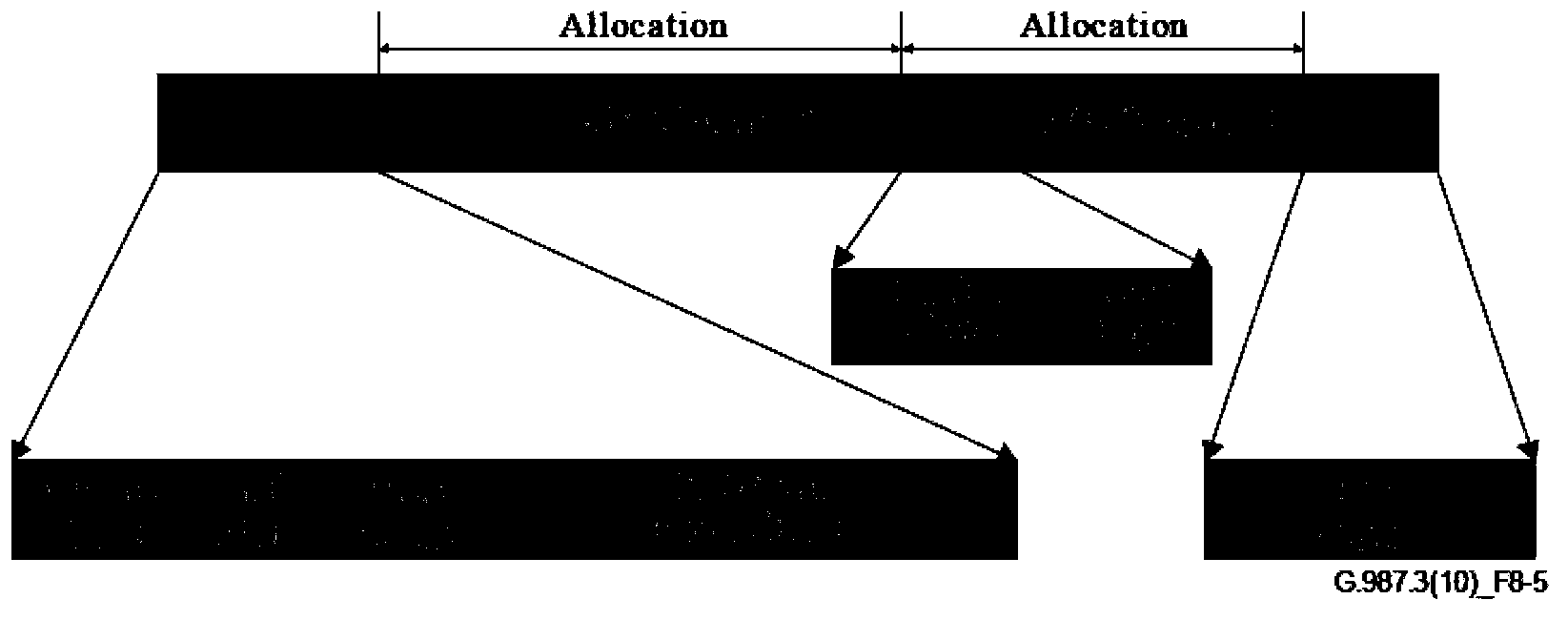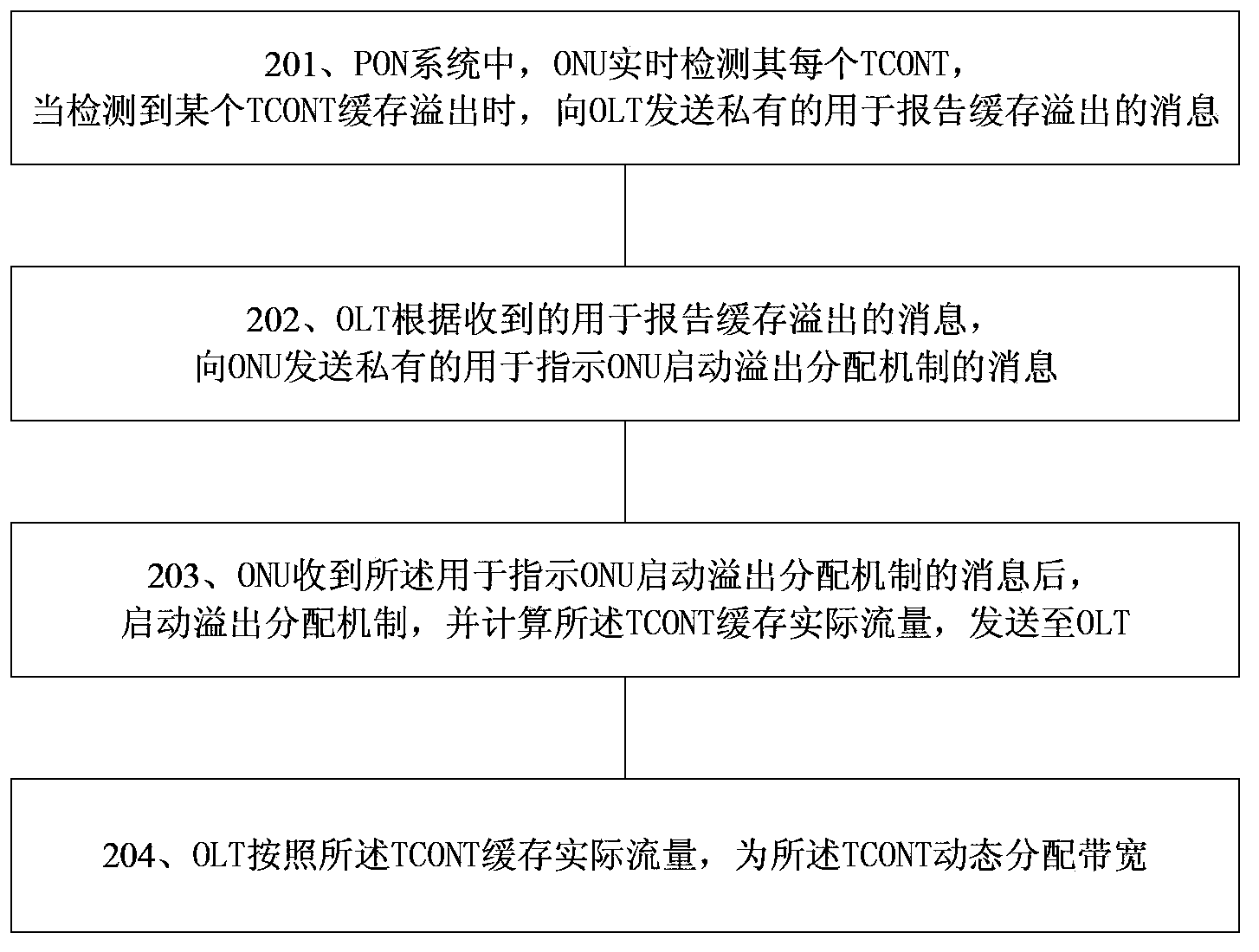Method and system for improving bandwidth allocation efficiency
A bandwidth allocation and efficiency technology, applied in the field of optical communication, can solve problems such as bandwidth inconsistency, limited buffer space, affecting XGPON network fairness and allocation efficiency, and achieve the effect of improving efficiency and reducing performance differences
- Summary
- Abstract
- Description
- Claims
- Application Information
AI Technical Summary
Problems solved by technology
Method used
Image
Examples
Embodiment Construction
[0036] The preferred embodiments of the present invention will be described in detail below in conjunction with the accompanying drawings. It should be understood that the preferred embodiments described below are only used to illustrate and explain the present invention, and are not intended to limit the present invention.
[0037] Since XGPON acts as a time-division system, each Alloc_ID has the opportunity to send data only in a certain upstream time slot, so the data packet must be stored and forwarded after entering the ONU. If the time slot of Alloc_ID is not reached, the buffer is full. Packets are naturally dropped. However, it is also found from practical engineering applications that if the bandwidth is large enough, many data packets can be read out and sent immediately after entering the buffer area. It can be said that this part of data does not need to be cached. Knowing the actual traffic situation of Alloc_ID, Alloc_ID can fully support the data flow that excee...
PUM
 Login to View More
Login to View More Abstract
Description
Claims
Application Information
 Login to View More
Login to View More - R&D
- Intellectual Property
- Life Sciences
- Materials
- Tech Scout
- Unparalleled Data Quality
- Higher Quality Content
- 60% Fewer Hallucinations
Browse by: Latest US Patents, China's latest patents, Technical Efficacy Thesaurus, Application Domain, Technology Topic, Popular Technical Reports.
© 2025 PatSnap. All rights reserved.Legal|Privacy policy|Modern Slavery Act Transparency Statement|Sitemap|About US| Contact US: help@patsnap.com



